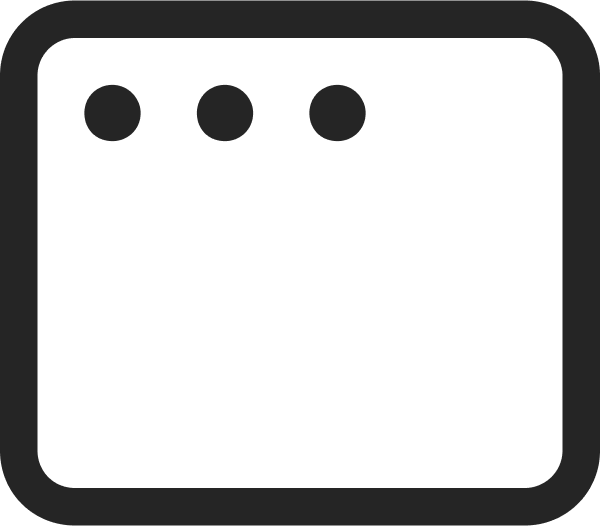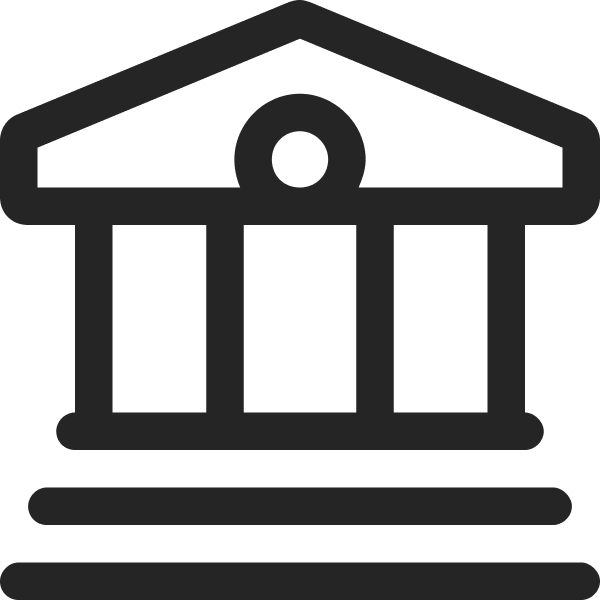7 Long-Form Content Examples Elevated by Web Design
October 18, 2022
Words by Selene Nelson
For as long as the human race has existed, people have loved a good story.
Even today, in our fast-paced, digital world, we’re drawn towards narratives that are compelling, educational, moving and meaningful – but the most impactful long-form content examples contain far more than just words.
Today, web design is just as important as the written content itself, and to get the best results, it’s helpful to stop viewing content and web design as two separate entities. Instead, try to see them as a vital duo that work together, ensuring your finished product is both memorable and meaningful.
This is actually a huge focus for us at Vev—we want to make it easy for web designers and content managers to create amazing web content together. To explore just how critical web design can be in the world of content, let’s take a look at some of the most effective long-form content examples and the web design choices that make them sing.
What is Long-Form Content?
First up, it’s worth just clarifying what we mean by “long-form content”. While there’s debate about how long web editorial has to be to be classed as long-form, generally it’s between 700 and 3,000 words—though it can be longer. In fact, some of the most successful long-form content examples out there go well over this threshold, with research suggesting that articles over 3,000 words return the best results.
Whatever the word count, long-form content is designed to be read, to have context, to be research-backed, and ultimately, to provide your reader with some sort of value. In the past, when media was print and not digital, mere words were enough—but there’s no escaping the fact that today, the best examples of long-form content aren’t only interesting and immersive, but interactive too. This means that it’s become absolutely necessary to use web design to bring your long-form content to life.
In a world of increasingly short attention spans, it’s crucial for content creators not just to capture a reader’s interest, but to hold it.
Long-Form Content and Web Design
So, how exactly can you use web design to bring your content to life? And why has cutting-edge web design become such a key part of long-form content creation? Before we look at some specific long-form content examples, it’s important to understand the different ways that editorial content has had to adapt to the web.
The rise of digital journalism has had a huge impact on content as a whole, not just long-form. Newspapers and media publishers haven’t only had to shift their content onto a digital platform, they’ve also had to adapt it to make sure it's relevant to the digital age.
Digital storytelling is now the narrative technique of choice, and this means that the visual element—how content is designed—becomes just as crucial as the words themselves. The days where walls of text (no matter how interesting!) were enough are long gone, and today, people expect to consume content that’s innovative and interactive.
Design Ideas for Long-Form Content
The evolution of digital storytelling means that content creators and web designers must work together to bring long-form content to life—and the exciting thing is that there are so many ways to do this. Many of the best long-form content examples use techniques like scrollytelling, which helps draw the reader into the story as they scroll. Others use interactive infographics to convey data and data storytelling techniques to tell engaging stories.
But really, this is the tip of the iceberg. The beauty of digital storytelling is that it gives content creators and web designers freedom to shape their narrative, to think about how they want their story to look, to feel, and to sound. When done right, long-form content won’t only captivate a reader, it’ll also provoke thought, encourage ideas, and maybe even spark action.
7 Long-Form Content Examples
With all of that in mind, let’s take a look at some content creators and designers who got it right. We've broken down a few of our favorite long-form content examples to explain why they work so well.
Brahma Roofing and Construction
An excellent long-form content example that really nails web design can be seen in a digital edition of Roofing Contractor magazine. This Vev-created profile spotlight from Brahma Roofing and Construction utilizes scrollytelling and bright visuals to humanize the company, share their story, and promote their services.
A vibrant and colorful photograph of the company’s leadership team instantly piques human interest, and underscores the focus on individual, personal stories that runs throughout this piece. Long-form content about businesses and organizations can often feel sterile, but by including several photos of the company’s employees, and highlighting personal quotes in colorful text blocks, it stays engaging and relatable.
As you scroll through, a box containing key facts about the company jumps into focus, instantly highlighting what the company does, where they’re based, and where to find their website. By keeping key info in an interactive box like this, the designers have ensured that even people who skim-read the content will know exactly which services the company provides and how they can find out more.
Human Rights House Foundation
This 2021 annual report from non-profit Human Rights House is another example of how long-form content can be brought to life by innovative web design. In particular, it’s one of the best examples of long-form content that utilizes interactive graphics to help the reader understand and visualize data.
Just like the previous example, this Vev-created report kicks off by humanizing the content—in this case, by beginning with a video of people which feels instantly intimate and personal. Powerful photos of conflict also gives the content a professional photojournalistic feel.
Annual reports often have the tendency to be a little dry, but this expertly-crafted report stays engaging and digestible throughout due to the carefully-considered design. Photos and illustrations break up the text, and animated number counters highlight figures and statistics. Though there are plenty of words, the clean design and typography ensure the content is easy-to-read, and the colorful text boxes help the reader focus on what’s most important.
1 News
Another Vev-built piece, Journalist John Campbell’s digital essay "From Egmont to Taranaki" is a touching deep-dive into New Zealand history, Maori culture, and the joy of travel. This evocative and deeply personal account is not only beautifully enhanced by the web design, but a fine example of how long-form content can be a multi-sensory experience.
The essay comes to life with the addition of audio—snippets of a podcast narrated by Campbell himself, which really helps immerse the reader in the story and feel connected to the writer. Full-size color photos allow the reader to visualize the experiences they’re reading about (or listening to), as well as put faces to names and feel a deeper, more personal attachment to the story.
Animated text boxes focus on some of Campbell’s key takeaways, and animated number counters underscore many of the essay’s somber yet significant stats. Images, illustrations and videos are studded throughout this lengthy piece of content, diversifying the reader experience and keeping them scrolling. The essay is long, encompassing multiple chapters, but the contents are formatted in a single design, creating a seamless scrolling experience.
Service Now
ServiceNow’s "The Sustainability Advantage" is another example of long-form content that uses creative design and interactivity to transform a corporate report into a visually-appealing and dynamic narrative. Created in Vev by Message Lab, this interactive report on the significance of environmental, social, and corporate frameworks utilizes some of the best scrollytelling techniques we've seen.
Scrolling down triggers the content to leap into life in many different ways, keeping the reader captivated in the narrative. Animated illustrations at the start tell the reader this is no ordinary business report, and key data is highlighted via interactive charts and graphs, ensuring that the reader doesn’t miss any vital facts.
Throughout the content, the reader’s attention is guided to the most important information—be it statistics or quotes—and the words and data are continually broken up with text boxes, images and illustrations, which makes this lengthy piece of content feel bitesize and accessible.
New York Times
The evolution of long-form content is perhaps best seen in the realm of digital journalism, and The New York Times in particular has become known for long-form editorial that’s visually-driven and dynamically designed. Though it was published back in 2012, "Snow Fall: The Avalanche at Tunnel Creek" is still regarded as one of the best long-form content examples around, and one of the reasons the NYT is viewed as a pioneer of digital content.
Snow Fall tells the story of Washington state’s Tunnel Creek avalanche, and though this content began life as a traditional in-depth article, it soon blossomed into a piece of multimedia journalism that allowed the NYT to really flex their creative muscles. The article opens with a full-screen video of snow blowing on a mountain, instantly transporting the reader into the story and creating a chilling atmosphere.
As you read, the tale of the avalanche unfurls through photos, videos and graphics, many of which come to life as you scroll. The illustrations and images are as useful as they are beautiful, which helps keep the reader fixated on the story. This multi-sensory, experience-based feature was an enormous success, receiving over 3.5 million page views and 2.9 million views in the first six days—one third of whom were new visitors to the NYT.
SBS: The Boat
Another example of long-form content that’s enriched by web design is broadcaster SBS’s interactive retelling of "The Boat", a short story by Nam Lee. Believed to have been inspired by Snow Fall, this digital graphic novel tells the story of a 16-year-old Vietnamese refugee sent to Australia by boat, and the immersive scrollytelling techniques and art direction turn this narrative into an unforgettable multi-sensory experience.
As the reader scrolls, multimedia is streamed into the microsite at their scrolling speed, and animation, sound design, archival footage, text and music are used to great effect. The agony of seasickness is perfectly depicted by the rocking movement of illustrations, which spin across the screen, and the audio of thunder and lashing rain conveys the terrifying power of the storm, further captivating the reader.
Other effects, like flickering lights and the sounds of people on the boat, help immerse the reader in the reality, and encourage them to keep reading. Parallax scrolling is also used to give the illusion of depth, which adds to the overall cinematic feel. With haunting music and sounds, characterful illustrations, and innovative animation and interactivity, The Boat is an excellent example of how multimedia can be used within long-form content.
The Barbican: Soundhouse
London's art gallery and venue the Barbican is renown for its creativity, and the rise of interactive storytelling has allowed them to experiment with digital storytelling and interactive audio. When their 2020 audio exhibition Soundhouse: Intimacy & Distance was canceled due to COVID-19, the Barbican team looked for a new way to bring the exhibition to life digitally.
The result is an immersive microsite that turns solitary creative activities, like listening to music or a podcast, into public, communal experiences. The online exhibition begins with an artistic video, which immediately sets the tone of the content, and the reader can then scroll down to three digital "listening rooms". Each room has a radio player with audio and podcasts chosen by a curator, a track list, and an introduction, also by the curator.
The rooms have their own distinct design, and feel like separate places. All contain full-size color images and video, interactive collages, subtle transitions and embedded media. This is another multi-sensory experience that allows the user to really immerse themselves in the art, and it’s a great example of long-form content that uses audio to explore a narrative.
The Easy Way to Create Impressive Long-Form Content
Want to tell an immersive long-form story? Check out Vev! Our pre-coded interactive storytelling components—like video scrollytelling, horizontal scrolling, parallax images, and even 3D—are helping world-class publishers create premium long-form content without coding anything. Digital content can then be published anywhere on the web—including to your existing website.
Want More Inspo?
Get our monthly newsletter straight to your inbox.
You can always unsubscribe at any time.
Privacy Policy



















